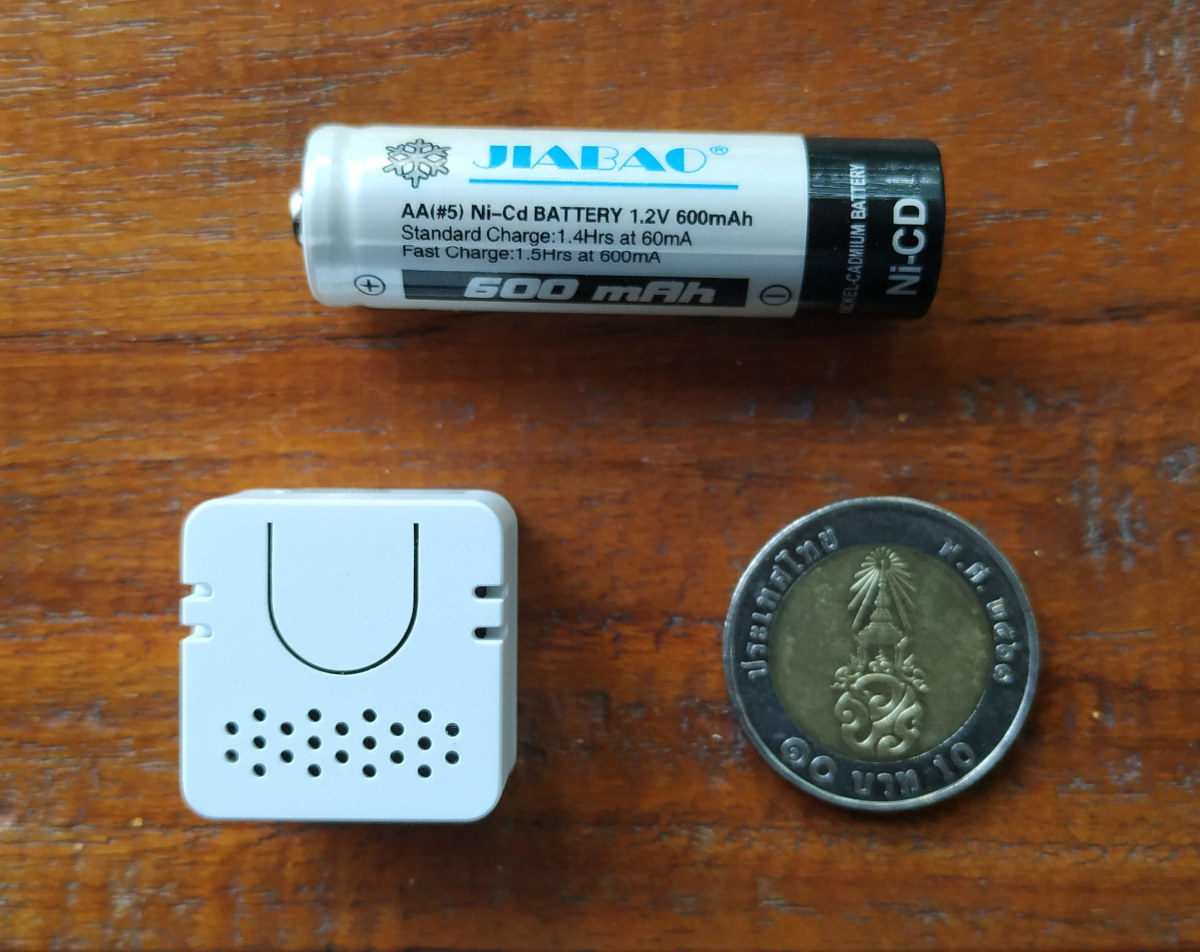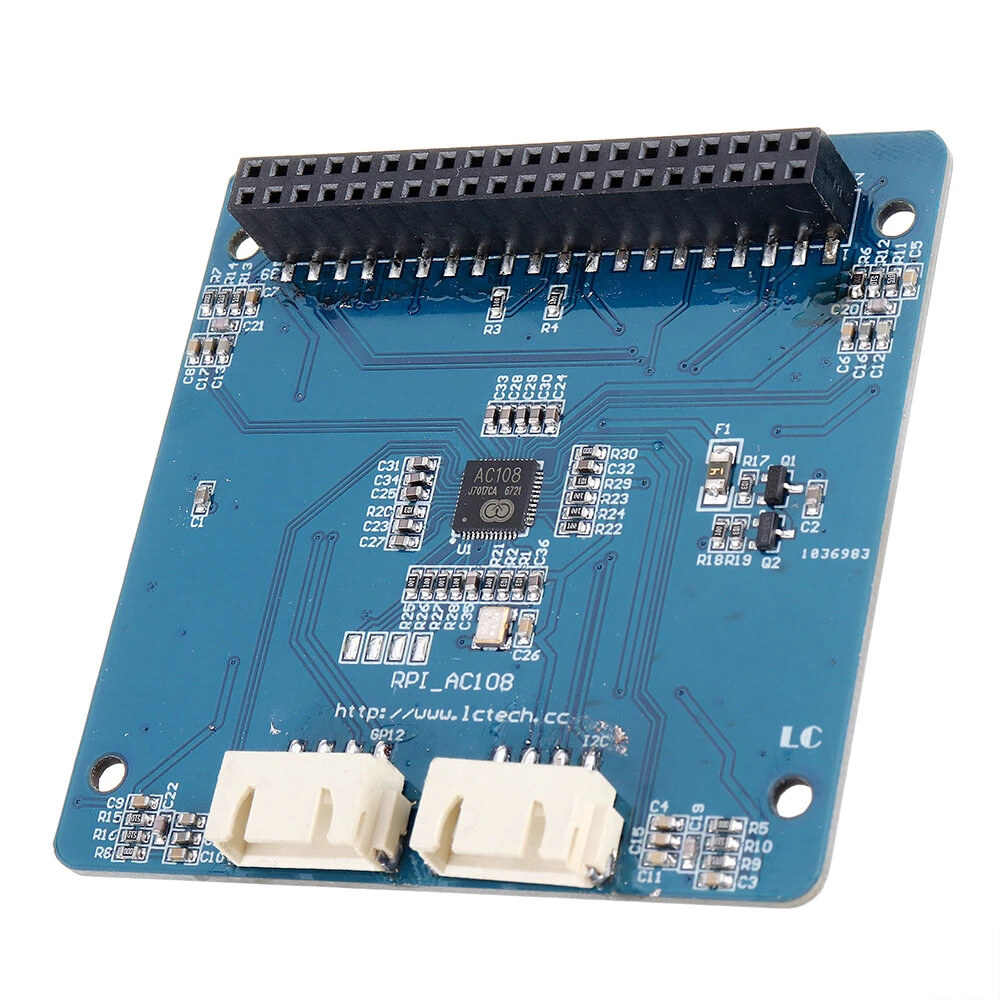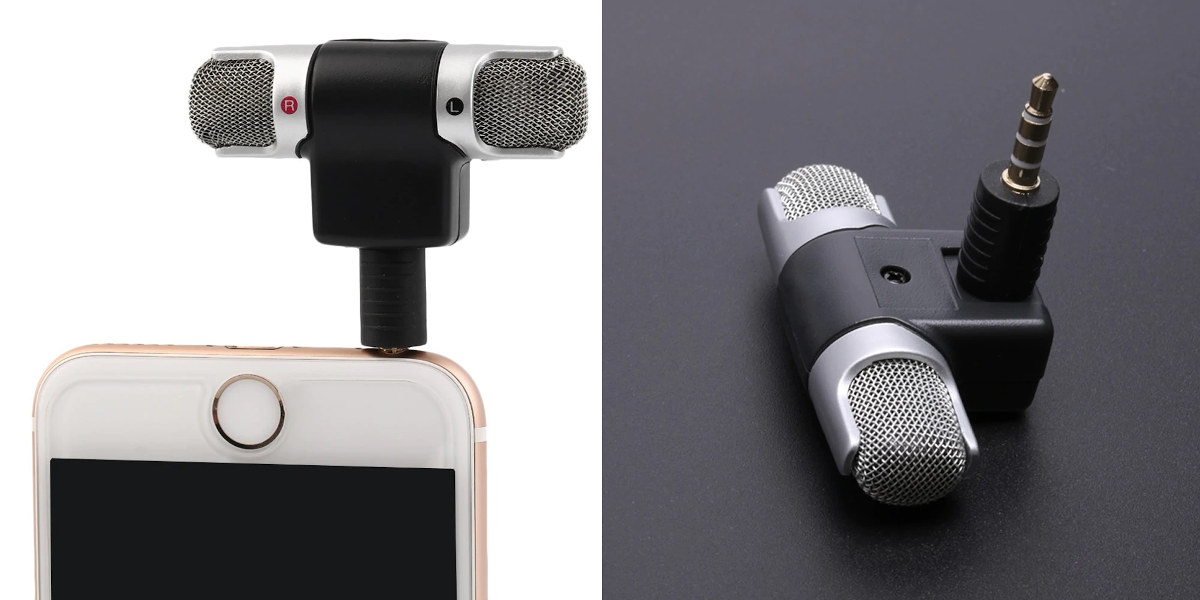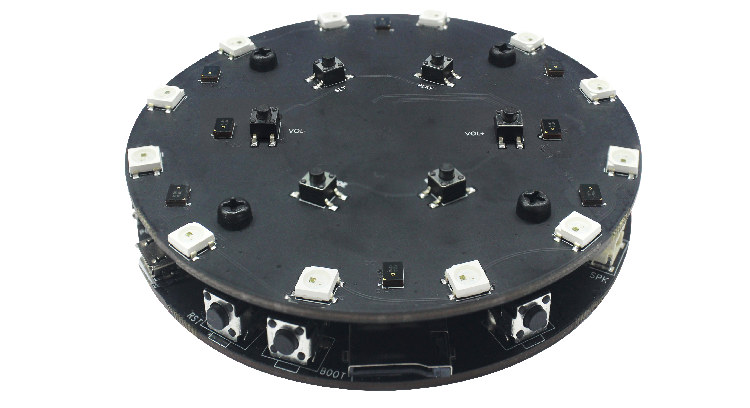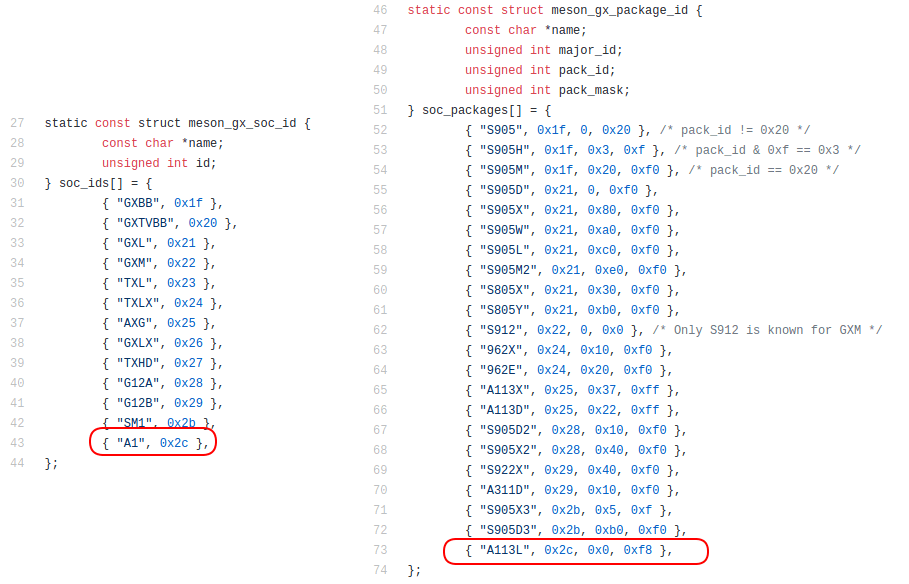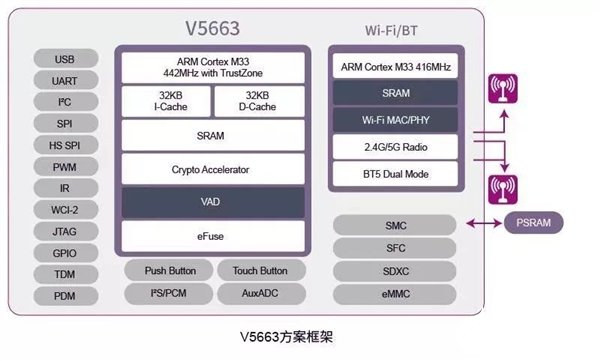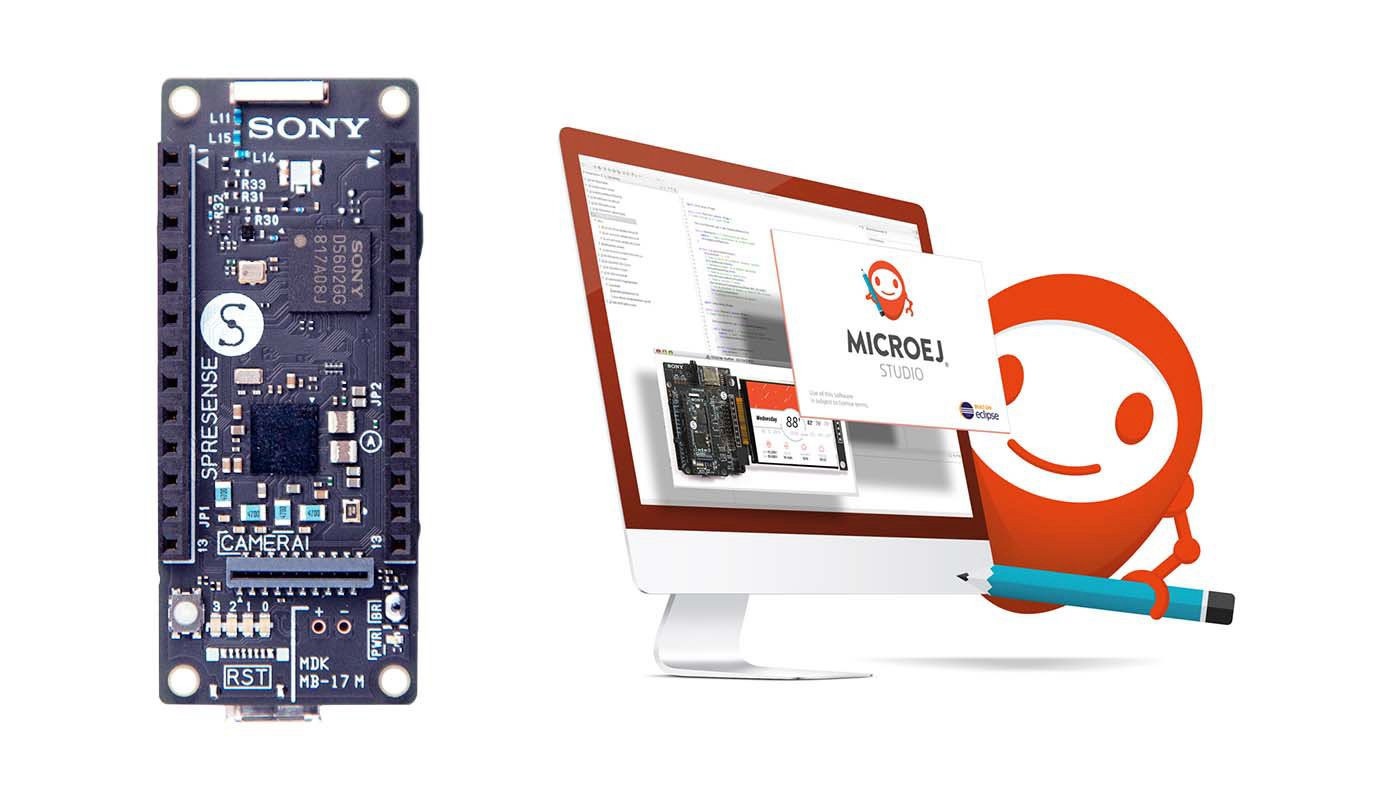M5Stack has just launched Atom Echo, a coin-sized programmable Bluetooth speaker based on Espressif Systems ESP32-PICO-D4 system-on-package. The company sent me an early sample to play with before launch… but let’s have a look at the specification before checking the device further. Specifications: SiP – Espressif Systems ESP32-PICO-D4 system-in-package with ESP32 dual-core processor @ 240MHz Wi-Fi, BLE 4.0 and 4MB flash Audio 0.5W/NS4168 I2S speaker SPM1423 PDM microphone Expansion 5-pin + 4-pin headers with 6x GPIOs, UART, 5V, 3.3V, GND 4-pin digital Grove header with 2 I/Os, 5V and GND Misc – RGB LED (SK6812), Function (Top – G39 pin) and reset buttons (side), IR LED Power Supply – 5V/500mA via USB-C port Dimensions – 24 x 24 x 17mm (plastic material) Weight – 10 grams The Bluetooth speaker is really small, but you may think CNXSoft has big hands and fat fingers so it makes the speaker smaller than […]
$13 RPI_AC108 Audio Board Ships with a 4-Mic Array for Raspberry Pi
X-Powers is a subsidiary of Allwinner, better known for its PMIC chips for Allwinner Cortex-A processors., but we also discovered X-Powers AC108 quad-channel ADC chip for microphone arrays in 2017. Soon after, Seeed Studio launched ReSpeaker 4-Mic Array for Raspberry Pi, but I had completely forgotten about the audio chip since then. That’s until this morning when I came across RPI_AC108 audio board also coming with four microphones and several LEDs. RPI_AC108 specifications: Audio X-Powers AC108 quad-channel ADC with I2S/TDM output transition 4x MEMS microphones Expansion 2x Grove interfaces (1x I2C, 1x GPIO port using pins 12 & 13) 40-pin Raspberry Pi compatible header working with Raspberry Pi Zero / Zero W / 2B / 3B / 3B + / 4 and other compatible development boards Misc – 12x LEDs (APA102) connected over SPI, GPIO5 enables power Dimensions – 65mm x 65mm x 9mm The board gets its power (3.3V and 5V) from the […]
Sponsored: Wondershare UniConverter is an All-in-One Video Converter, Recorder and Editor
You may have multiple programs or plugins to manage your videos, one to download videos from the web, one to edit your own videos, a separate video converter, etc… and they may have incompatibilities, leading to some painful headaches. Available for both Windows and Mac OS, Wondershare UniConverter should make handling videos much easier as an all-in-all video suite that allows you to convert, edit, and download videos, as well as burn video DVDs and transfer videos to mobile phones and other devices. Key features of Wondershare UniConverter include: Video conversion of 1000 formats at up to 30x faster speed without quality loss, and with the ability to greatly reduce video size. Video Editing with support for Cropping & trimming Saturation, brightness & contrast adjustment Special effects such as BW filter, Raindrop, and many other filters Watermarks, either text or images Adding external subtitles from local files (.srt, .ass, or […]
3.5mm/USB Stereo Microphone Could Make Cheap 2-Mic Array
We previously wrote about the possibility of using Sony PS3 Eye camera as an inexpensive 4-mic array as at the time (August 2019) it sold for $7.5, and can still be found for $13 on Amazon. But I’ve come across a potential even lower-cost option with a tiny stereo microphone that connected to the 3.5mm audio jack on your phone or computer and sells for a couple of dollars ($2-$5) on sites like Aliexpress ($2.15) or GearBest. There’s not much in the way of specifications: Uni-directional stereo condenser microphone Left and right channel stereo recording Gold plug for maximum conductivity and minimum noise Sensitivity – 38 ± 3dB Frequency Response – 100-15,000Hz Plug – L-shap gold-plat mini plug, 3.5mm Dimensions – 5.7 x 5.5 cm If you click on the GearBest link, you’ll find there’s both a “mobile phone ” version and a “PC” version. I supposed it was because […]
ESP32-Korvo AI Development Board Leverages ESP-Skainet Voice Assistant
Last September, Espressif Systems unveiled ESP-Skainet voice assistant optimized for ESP8266 and ESP32 wireless SoC with support for WakeNet wake word engine and MultiNet speech commands recognition with the former requiring just 20KB RAM for one word, and the latter supporting up to 100 offline commands as long as you had 4MP SPI flash or more. At the time, it only supported the Chinese language and worked on the upcoming “LyraT-Mini audio board“, now available for $26.99 shipped but only including one microphone. Espressif Systems has now announced a better AI development board with ESP32-Korvo AI development board includes featuring a mainboard with ESP32 processor and an audio ADC, and a subboard equipped with a 3-mic array, RGB LEDs, and various buttons. ESP32-Korvo specifications: Mainboard Wireless module – ESP32-WROVER-B with ESP32 dual-core Wi-Fi / BT processor, 128 Mbit SPI flash, and 64 Mbit PSRAM Storage – MicroSD card slot Audio […]
Amlogic A113L Dual-Core Cortex-A35 Processor Targets Smart Audio and IoT Applications
Over two years ago, we reported about Amlogic A111, A112, A113 processors designed for audio applications such as smart speakers. A111 features four Cortex-A5 32-bit core, while A112 and A113D/A113X processors come with four Cortex-A53 cores instead. We have not heard much about those since then, but all those processors are still listed on Amlogic website, A112 is supposedly used in Xiaomi AI smart speaker, and Amlogic A113X1 Far-Field Dev Kit is still listed on Amazon’s list of devkits for Alexa voice service, but currently out of stock. Amlogic has been working on a more cost-efficient processor for smart audio and IoT applications with Amlogic A113L dual-core Cortex-A35 processor shown as Meson A1 in the Linux source code. It was just added in Linux 5.5. We don’t have much information about it, but it’s interesting as it’s the first Cortex-A35 processor from the company, and it targets the same smart […]
UNISOC V5663 Arm Cortex-M33 AIoT SoC Comes with 802.11 b/g/n/ac WiFi 5, Bluetooth 5.1
UNISOC has launched a new processor for AIoT (Artificial Intelligence + IoT) applications with V5663 dual-core Cortex-M33 processor, supports for dual-band WiFi 5, Bluetooth 5.1, and audio features such as a voice activity detector and microphone array support which should make it ideal for smart speakers, and other smart audio applications. UNISOC V5663 WiSoC specifications: CPU Arm Cortex-M33 processor @ 442 MHz with TrustZone, 32KB I-cache, 32KB D-Cache for application code Arm Cortex-M33 processor @ 416 MHz for WiFI and Bluetooth Memory – Built-in SRAM + external PSRAM interface Storage – eMMC, SDXC interfaces Connectivity – Dual-band 802.11 b/g/n/ac WiFi 5 2×2 MIMO Bluetooth 5.1 dual-mode (Classic + LE) Mesh Networking for WiFi and Bluetooth Indoor Positioning – WiFi RTT, Bluetooth direction finding (AoD / AoA) Audio – Voice Activity Detector (VAD), PDM and I2S/PCM interfaces Peripherals: USB 2.0 / 3.0, eMMC I2C, SPI, HS SPI, UART GPIO, PWM IR […]
Sony Spresense 6-core MCU Development Board Now Supports Java
Sony Spresense board was introduced in spring 2018 with a 6-core Cortex-M4 microcontroller from the company, GPS & GLONASS, as well as audio support. The breadboard-compatible board could also be inserted into an Arduino UNO R3 compatible base board, and Sony offered support for both the Arduino IDE and a C-based NuttX-based SDK. You’ll find some more details and photos in our “review”. Sony has now partnered with MicroEJ to provide developers with Java support on Spresense board through MicroEJ Virtual Execution Environment (VEE). A Java simulator (VEE Virtual Device) allows you to develop software for Spresense independently of the hardware. Beside plenty of libraries, MicroEJ VEE features MEJ32 32-bit virtual core is compatible with various architectures including ARM Cortex-M, ARM Cortex-Ax, RX, V85, MIPS32, TriCore, and Tensilica. Java enables application portability which means that any GUI/IoT/Security or application code can run on various embedded systems supported by MicroEJ VEE. […]


